Another year passed – 2011 was quite the year in the food world! Here are a handful of “hot button” topics that sent us to our keyboards with heads shaking. What ARE we doing to our food, our families, and our future?
Big Ag – specifically Monsanto – is doing its best to destroy our soil, reduce the diversity of the crops we plant, and control the governmental agencies that are supposed to regulate it.
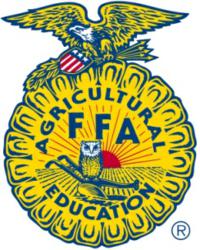 Start ’em young and raise ’em right! How do you get your target market to be totally committed to your product? You spend years promoting to them as children. Monsanto is indoctrinating students with subsidized educational materials for elementary and science teachers, and funding a wide variety of student activities.
Start ’em young and raise ’em right! How do you get your target market to be totally committed to your product? You spend years promoting to them as children. Monsanto is indoctrinating students with subsidized educational materials for elementary and science teachers, and funding a wide variety of student activities.
This year, the company stepped up their efforts to include $1,000,000 to support 14 major events for the National FFA Organization – known in my day as the Future Farmers of America.
Legal Challenges to Big Ag, the USDA, and the FDA Lawyers are busy trying to deal with new challenges from manufacturers of genetically engineered feed crops and from the agencies that are supposed to regulate them. It was a year of lawsuits, counter-suits, and appeals.
In a final act of futility, the USDA decided to let the Fox in the Hen House and allow the GMO industry to conduct its own environmental impact studies on the products they want to release or pay other researchers to do them. Now those will be really objective studies, right?
 USDA Deregulates Genetically Modified Alfalfa In a decision that had the “good food world” scratching its collective head, USDA chief Vilsack made a quick u-turn to give Big Ag a free lunch when it comes to GMOs. Organic farmers, dairy producers, and organic consumers across the country are outraged.
USDA Deregulates Genetically Modified Alfalfa In a decision that had the “good food world” scratching its collective head, USDA chief Vilsack made a quick u-turn to give Big Ag a free lunch when it comes to GMOs. Organic farmers, dairy producers, and organic consumers across the country are outraged.
Home garden? Say HELLO to Monsanto! Who needs “Better living with chemistry” when you have “Better breeding with Monsanto?” If you thought that planting your own garden and growing and harvesting your own crops would keep you safe from the long arm of Monsanto, think again!
Big Food – giant companies producing ultra-processed food-like substances – is determined to sell as much as possible to as many as possible, regardless of actual food value.
 Kids Taught to Prefer Sugar, Fat, Salt, and Fast Food The frontier in the fight against childhood obesity should be pushed back to toddlers and preschoolers, a new study suggests. Researchers have found that kids ages 3-5 already have developed a taste for sugary, fatty, and salty foods, and easily recognize the brands that offer these options.
Kids Taught to Prefer Sugar, Fat, Salt, and Fast Food The frontier in the fight against childhood obesity should be pushed back to toddlers and preschoolers, a new study suggests. Researchers have found that kids ages 3-5 already have developed a taste for sugary, fatty, and salty foods, and easily recognize the brands that offer these options.
Junk Food Industry Battles Attempts to Reduce Consumption OK folks, it’s war! The bad guys – junk food industry, including soda makers – are winning the battle! That is, they’re doing their level best to continue to market and sell their products and prevent any constraint of their trade by government agencies or even “advisory committees.”
Don’t feed your kids Twinkies for breakfast! Kellogg’s Honey Smacks, nearly 56% sugar by weight, leads the list of the 10 worst children’s cereals, according to the Environmental Working Group’s analysis. In fact, a one-cup serving of the brand packs more sugar than a Hostess Twinkie, and one cup of any of the 44 other children’s cereals has more sugar than three Chips Ahoy! cookies.
 FDA Action: Food Dyes and Hyperactivity? The use of artificial enhancements is relatively recent. In the 1800s, American food manufacturers began doctoring their wares with toxic pigments made from lead and copper. Today, while food dyes come from a wide range of sources, many artificial dyes are petroleum-based. Why degrade the nutrient value of our food with over processing and then disguise it with artificial colors and flavors?
FDA Action: Food Dyes and Hyperactivity? The use of artificial enhancements is relatively recent. In the 1800s, American food manufacturers began doctoring their wares with toxic pigments made from lead and copper. Today, while food dyes come from a wide range of sources, many artificial dyes are petroleum-based. Why degrade the nutrient value of our food with over processing and then disguise it with artificial colors and flavors?
Functional Foods, Super Foods – What ARE You Eating? Somehow I thought all foods were “functional foods,” after all, their function is to nourish our bodies. And as for “super foods?” I’d include things like kale, bok choy, spinach – all those leafy green vegetables – in the super food category. So I was wrong. Functional foods and super foods are manufactured foods, sometimes “edible food like substances,” with all kinds of additives to make them “nutritious.”
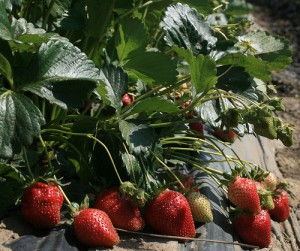 Disappearing Nutrients OK folks, I’ll admit it; I certainly thought the shiny red tomatoes and strawberries in the plastic clam shell boxes seemed to taste less and less like those I remember as a kid. I thought it was just the idealistic glow around childhood memories. But no: it turns out that our conventional fruits and vegetables really are losing some of their nutritive value.
Disappearing Nutrients OK folks, I’ll admit it; I certainly thought the shiny red tomatoes and strawberries in the plastic clam shell boxes seemed to taste less and less like those I remember as a kid. I thought it was just the idealistic glow around childhood memories. But no: it turns out that our conventional fruits and vegetables really are losing some of their nutritive value.
Tweaking Tastes and Creating Cravings When you chug a sports drink or chew a stick of gum, you probably don’t think of science. But there is a precise science – and a delicate art – behind what you taste. CBS 60 Minutes’ Morley Safer reports on the multibillion-dollar flavor industry, whose scientists create natural and artificial flavorings that make your mouth water and keep you coming back for more.
Food Safety – our food is making us sick – or even killing us – in larger and larger numbers than ever before.
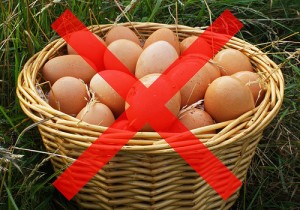 Where is Law and Order when we need it? The first Federal Food, Drug and Cosmetic Act – the goal of which was to protect the public by preventing “deleterious, adulterated, or misbranded articles from entering interstate commerce” – was passed way back in 1938. The Act also describes a food product as “adulterated” if the food was” prepared, packed, or held under unsanitary conditions where it may have become contaminated with filth or in some other way rendered injurious to health.
Where is Law and Order when we need it? The first Federal Food, Drug and Cosmetic Act – the goal of which was to protect the public by preventing “deleterious, adulterated, or misbranded articles from entering interstate commerce” – was passed way back in 1938. The Act also describes a food product as “adulterated” if the food was” prepared, packed, or held under unsanitary conditions where it may have become contaminated with filth or in some other way rendered injurious to health.
Food is also considered adulterated if it contains any poisonous or deleterious substance that may make it injurious to health. Similar laws deal with the meat side of the equation over at USDA/FSIS.
It is illegal to “adulterate” food products. The Act set up civil and criminal liability for those who do.
So what happened? Why aren’t we seeing the courts and prisons filling up with the guilty parties in the recent outbreaks of food borne illnesses?
Deaths and Illnesses From E.coli Pit Spain Against the Rest of Europe A huge outbreak of a virulent strain of enterohemorrhagic E. coli known as EHEC spread across Western Europe into Russia. In the end, at least 50 died and more than 4,000 were taken ill, including 852 who developed kidney-damaging hemolytic uremic syndrome (HUS).
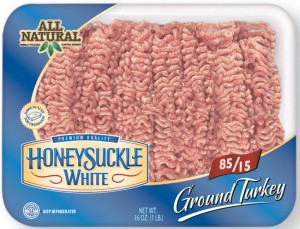 Millions and Millions Recalled – Our Food Is Making Us Sick In 2010, we were reeling from the recall of 550,000,000 eggs – that’s more than one-half billion! In 2011, a single Cargill plant in Arkansas recalled 36,000,000 pounds of ground turkey.
Millions and Millions Recalled – Our Food Is Making Us Sick In 2010, we were reeling from the recall of 550,000,000 eggs – that’s more than one-half billion! In 2011, a single Cargill plant in Arkansas recalled 36,000,000 pounds of ground turkey.
Germany Recalls Eggs – 1000 Farms Closed While the US still holds the dubious title of most eggs recalled because of bacterial contamination, Germany had to deal with an egg recall because of chemical contamination.
The eggs were the products of chickens given feed contaminated with dioxin, a type of hydrocarbon and a by-product of burning rubbish and industrial activities. Dioxin can cause illness to human beings, including cancer and miscarriages.
Cantaloupe-Importer Del Monte Fights Back Cantaloupes are one of summer’s favorite fruits and, with the eternal summer of the global food system, consumers can eat them pretty much year ’round. The problem with cantaloupe is that they seem to be prone to collecting some pretty nasty pathogens including Listeria and Salmonella.
Food Equity/Justice – food production, processing, and preparation is more and more often a function of the labor of people who can less and less afford to buy what they are making.
Occupy Food? Wall Street Is Driving Up the Price of Food The “Occupy” marches and protests have spread across North America and around the world to thousands of cities. Yet there is little understanding that speculation by Wall Street contributed to the skyrocketing of food costs.
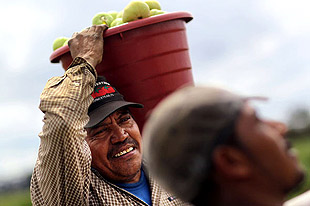 Food justice and farm worker wages have been in the news many times before. This fall the Coalition of Immokalee Workers (CIW) and the Florida Tomato Growers Exchange announced a landmark agreement to extend Fair Food principles to over 90% of Florida tomato industry.
Food justice and farm worker wages have been in the news many times before. This fall the Coalition of Immokalee Workers (CIW) and the Florida Tomato Growers Exchange announced a landmark agreement to extend Fair Food principles to over 90% of Florida tomato industry.
Food Justice: The Color of Food Field workers are not the only workers in the food supply chain that are suffering from poor wages and bad working conditions.
Hidden Crimes: Food and Farm Worker Welfare The “Good Food Movement” is a reaction to the global food system. Like much of our economy, food production is dominated by large corporations and industrial food processes, and consumers are looking for a sustainable food system.
The conventional food chain provides work for millions of people, in production, processing, distribution, and preparation. The future of good food cannot ignore these workers. People of color are often limited to low-wage service and production jobs, and at least 6 out of 10 farmworkers is undocumented.
Immigrants and refugees: the next generation of American farmers? The average age of American farmers is now over 57 and farmers aged 65 and older are the fastest growing group of farm operators, according to the USDA. The number of farms owned or operated by farmers under the age of 30 continues to shrink.
Where are new farmers going to come from? They’re coming from Somalia, Burma, Cambodia, Mexico; from around the world.
Alternative Food Systems – organic, sustainable, and local.
Organic Farming is Good for the Earth Organic farming is often falsely represented as being unscientific. However, despite the popular assumption that it sprang fully formed from the delusions of 60s hippies, it has a more extensive, and scientifically respectable, provenance.
Skeptics have often misrepresented a biologically based agriculture as if it is nothing but the substitution of purchased organic inputs for purchased chemical inputs. Biologically focused farming bases fertility maintenance on proven cultural practices and locally available waste products.
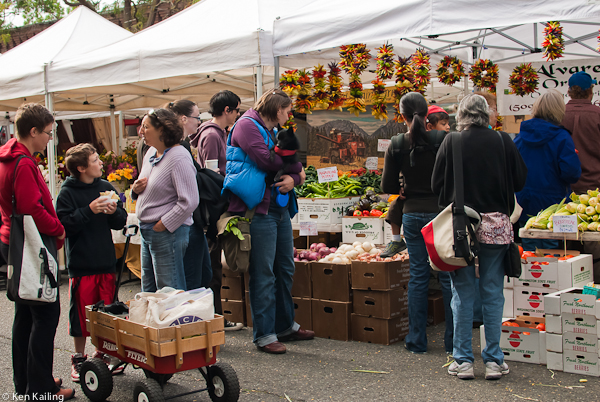 Farmers Markets: Home of The New Food Revolutionaries As cities grew, more and more people left the farms, and the food had to be brought to them. In the century since Seattle’s Pike Place Market was opened, a lot has changed and we have become distanced from our food and the people who produce it. It is today’s farmers market that is reconnecting American consumers to the land and to their food.
Farmers Markets: Home of The New Food Revolutionaries As cities grew, more and more people left the farms, and the food had to be brought to them. In the century since Seattle’s Pike Place Market was opened, a lot has changed and we have become distanced from our food and the people who produce it. It is today’s farmers market that is reconnecting American consumers to the land and to their food.
Natural Food Co-ops: Putting Local Sourcing Into Practice Food co-ops are different and they fit more comfortably into small towns and unique neighborhoods. Because they reflect the values and principles of their owners and members they can differentiate themselves more easily. Take a look at six very different natural food co-ops. Each one has its own personality and each one is committed to buying products from local providers.
Guerilla Grafters: Adding Fruit to Ornamental Trees The Guerrilla Grafters are a group of San Franciscans who believe urban trees are a precious thing to waste on simple flowers. Their goal is to graft – albeit illegally – fruit bearing branches onto non-fruit bearing fruit trees, in hopes that over time the city’s ornamental trees can provide food for residents free of charge.
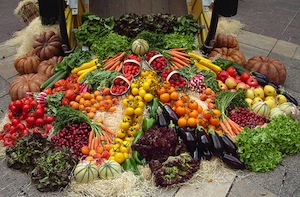 Organic Product Buyers Shift to Traditional Grocers/Target Is “organic” still ”alternative?”
Organic Product Buyers Shift to Traditional Grocers/Target Is “organic” still ”alternative?”
Nearly 40% of US consumers buy products that are certified organic or contain certified organic ingredients, a number that has held steady for the last three years. Where those consumers are shopping for those products has changed toward conventional and mass-market outlets and away from natural food stores.
Small Farmers Need Small Slaughterhouses Small farmers in the West who are raising meat and poultry need affordable – and legal – slaughterhouses. Nearly all the meat and poultry consumed in the US today comes from just four companies that operate their own USDA-inspected processing plants. Most of the remaining meat processors – beef, pork, lamb – do not process poultry.
The year past was a tough one for farmers, processors, retailers and restaurateurs, as it was for the world of consumers. It is clear that none of these issues have been resolved and 2012 will bring more to be dealt with. As long as we let the connection between producer and consumer grow more and more tenuous, we will continue to be faced with these challenges and with new ones we haven’t even thought of.
To read more about the year past, go to GoodFood World and search for your topic of interest or drill down on the categories at the top of the page.


